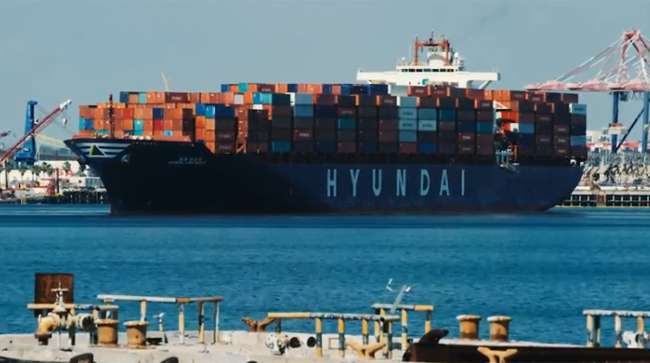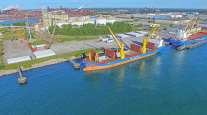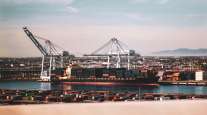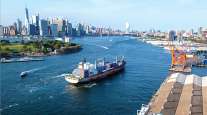Port of Long Beach Sets Record for Container Volume in a Year

The Port of Long Beach recovered from a rocky 2016 with a record-setting year in 2017, moving 7.5 million industry-standard twenty-foot-equivalent units, the port’s leader announced at the State of the Port address Jan. 24.
The total represents an 11% increase from 2016 and the highest total in the port’s 107-year history, breaking the old record of 7.3 million TEUs in 2007.
In December, container traffic grew 27% to 696,918 TEUs. Loaded imports also rose 27% to 345,721, and exports increased 12% to 137,449.
Port of Long Beach Executive Director Mario Cordero called 2017 a big year and proclaimed “we are strong” to the nearly 600 attendees at the event.
“With unemployment low and consumer confidence high, our outlook this year is good for both container and noncontainer cargo,” he said. “I have no doubt that we can grow our business even more.”
The Port of Long Beach moved 7.5 million TEUs in 2017, an 11% increase over the previous year -- and the highest total in the Port's 107-year history, beating our previous record set in the pre-recession year of 2007. #StateofPOLB pic.twitter.com/a9v2xeHTPj — Port of Long Beach (@portoflongbeach) January 24, 2018
“Business is once again booming, and the commission remains committed to serving our customers and community at the Port of Long Beach,” Harbor Commission President Lou Anne Bynum added. “We will continue to be the leading green port, devoted to a strategy that embraces powerful economic development and unrivaled environmental sustainability and social responsibility.”
Cordero also outlined a future in which the port operates 24 hours per day, seven days per week, being second to none environmentally and operationally.

Cordero
“We must be bold. We must adopt an Elon Musk state-of-mind. … I want the Port of Long Beach to be the Tesla of the port industry,” he said. “In an Amazon world, cargo cannot sit on our docks for days, and truckers can’t sit for hours in our terminals. I want us to be the Amazon of ports.”
Cordero highlighted the successful $1.5 billion project at the Long Beach Container Terminal’s Middle Harbor as part of his vision. The first two berths are complete, and the final one is under construction.
“This is the state-of-the-art, greenest terminal in the world,” Cordero said.
The San Pedro Bay Clean Air Action Plan sets forward more benchmarks to eliminate pollution. By 2030, terminal cargo-handling equipment and berthed containerships would not emit greenhouse gases. By 2035, trucks also would need to have zero emissions.
“Zero emissions remains our ultimate goal,” Cordero said. “For us to continue to grow sustainably, our port must be better prepared than other North American ports to bring goods on vessels that plug into clean shore power, move on zero-emission yard equipment and cranes, and are transferred quickly onto the most efficient network of trucks and trains.”
For 2018, Cordero said his priorities include reducing turn times and improving chassis operations.
Zero emissions remains our ultimate goal. We're working not just to reduce but to entirely eliminate emissions. #StateofPOLB pic.twitter.com/2is4TS8bNm — Port of Long Beach (@portoflongbeach) January 24, 2018
“To speed our truck moves, we’re supporting truck appointment systems and container peel-off programs. The updated Clean Air Action Plan requires all of our terminals to utilize reservation systems within two years. Truckers are extremely vital to our success,” he said. “Next on my agenda is a true gray pool with a neutral manager to optimize chassis transactions even more.”
Under Southern California’s “pool of pools” system, a trucker can use chassis from the major equipment providers — Trac Intermodal, Direct ChassisLink and Flexi-Van Leasing — regardless of the steamship line, but the three have different rental rates, terms and conditions, and maintenance rules. Each member manages its equipment how it sees fit.
In a gray pool, there is one price, one set of rules and one maintenance standard for the entire fleet managed by a third party.




